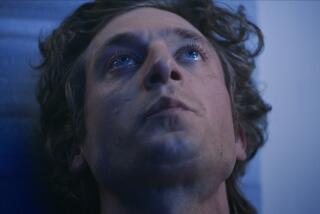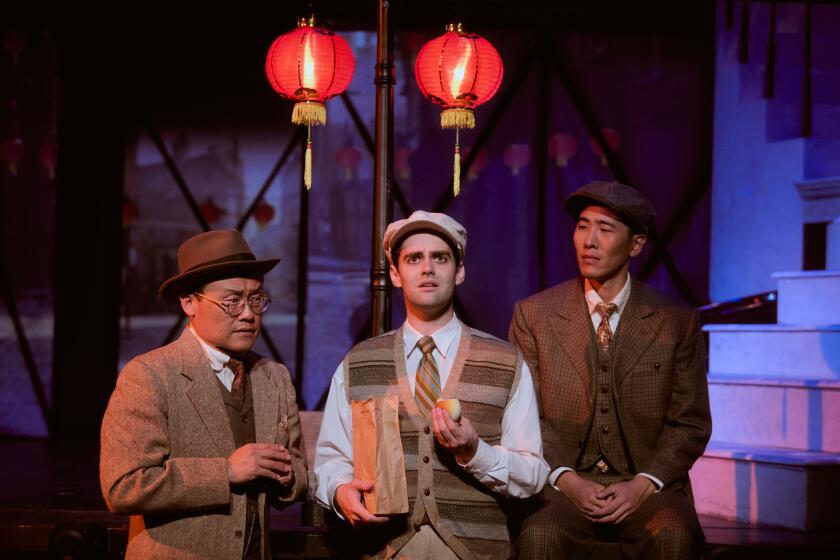Jose Quintero; Tony-Winning Director of O’Neill Plays
Jose Quintero, the director whose almost mystical bond with Eugene O’Neill resulted in a renaissance of interest in the playwright’s work, died Friday in New York of cancer. He was 74.
One of the principal figures in the last great chapter of American theater--the 1950s in New York--Quintero directed 17 productions of O’Neill’s plays. Among them were the landmark 1956 stagings of “The Iceman Cometh” and “A Long Day’s Journey Into Night” that restored the reputation of the playwright, who had been dismissed by critics and audiences in the last decade of his life.
Quintero’s direction of “Iceman” starring Jason Robards as Hickey, the hale and hearty barfly, had Brooks Atkinson of the New York Times proclaiming the play “a mighty theater work. O’Neill is a giant, and Mr. Quintero is a remarkably gifted artist.”
Later that year, Quintero directed the original Broadway production of “Long Day’s Journey,” which starred Fredric March as the tyrannical James Tyrone and Florence Eldridge as his drug-addled wife. Robards and Bradford Dillman played their troubled sons. The autobiographical drama, produced three years after O’Neill’s death, is generally considered to be the playwright’s finest work.
Quintero, Robards and “Iceman” were reunited in 1985 for a second highly praised production, this time on Broadway.
Robards, considered by many the finest actor in interpreting O’Neill’s plays, was cast as the father, James Tyrone. He had played Jamie, Tyrone’s older son, in the 1956 staging. Robards and Colleen Dewhurst starred in another notable O’Neill revival directed by Quintero, 1973’s “A Moon for the Misbegotten.” Quintero received his second Tony Award for that production. His first was for “Long Day’s Journey.”
The director and Robards joined forces on several other major O’Neill revivals on Broadway, including “Hughie” in 1964 and “A Touch of the Poet” in 1977. Robards and Dewhurst starred as the parents in a Quintero-directed Broadway revival of “Long Day’s Journey” in 1988.
Quintero had a reputation for always getting the best out of actors.
“He takes a lot from his actors,” Dewhurst once said. “From the first reading, his presence allows you to enter dangerous areas. You trust him not to let you go beyond the play or where you should go. He enters the process of discovery with you, unlike some directors who feel compelled to tell you at the first reading what the play is about.”
Of his relationship with Robards, Quintero once said: “I have very few friends and I would count Jason among them. As an actor, he’s unique. The avenue of communication between us is so totally unobstructed, so open. Unconsciously, we clarify O’Neill for one another.”
Jose Benjamin Quintero was born in 1924 in Panama City. He persuaded his father to send him to Los Angeles City College to study acting, then transferred to USC, where he received a bachelor’s degree in 1948.
“I never saw a play until I reached Los Angeles,” he once said. “I went to see ‘Life With Father.’ I didn’t understand a word of English.”
When his English improved he saw Emlyn Williams’ “The Corn Is Green,” attending every night of its two-week run in Los Angeles.
Although his father wanted him to become a doctor, he agreed to pay his son’s expenses at the Goodman Theatre School of Drama in Chicago. It was there that he met Geraldine Page, then a novice actress.
In 1949, he and some other drama students established a summer theater in Woodstock, N.Y. The group came to Manhattan in 1951, rented a deserted nightclub on Sheridan Square and became the Circle in the Square.
Years later, Quintero wrote that he switched from aspiring actor to director when the 14 members formed a circle and spun an empty wine bottle: “It pointed to me, and a director was born.”
It was the novice director’s groundbreaking 1952 revival of Tennessee Williams’ “Summer and Smoke” at Circle that made Page a star and established off-Broadway as an important theatrical force.
A 1956 visit to Carlotta Monterey O’Neill, the playwright’s third wife and widow, led to Quintero’s association with O’Neill’s work. He got her permission to revive one of O’Neill’s Broadway failures, “The Iceman Cometh,” and made theater history.
“I felt that he was writing about me,” Quintero once told The Times. “From the beginning, I felt that he was writing about the kind of landscape which I understood. I mean, I was one of the bums [in the bar at Harry Hope’s, the setting of the play]. I felt like one of the bums, he described me so completely.”
This triumph of “Iceman” persuaded the playwright’s widow to let Quintero direct “Long Day’s Journey” despite the playwright’s desire that the autobiographical play not be performed until 25 years after his death.
He left New York for a time and directed plays around the country. In Los Angeles, he also directed the first Center Theatre Group production at the Ahmanson of O’Neill’s “More Stately Mansions” in 1967 and then “Moon for the Misbegotten” at the Ahmanson in 1974-75. He directed Tennessee Williams’ “Cat on a Hot Tin Roof” at the Taper in 1983 with Kirstie Alley as Maggie.
He directed one film, “The Roman Spring of Mrs. Stone” (1961), based on a Tennessee Williams novella. It starred Vivien Leigh and Warren Beatty.
Even after he suffered cancer of the throat and had to use an amplifier that gave his voice a robotlike quality, Quintero continued to direct and teach.
The late Dewhurst once said of Quintero:
“He’s a man of passion, which we’re missing in life now, and he understands the fragile ego of the actor. I’d trust him with my life.”
Quintero is survived by a sister and by his companion, Nick Tsacrios.
More to Read
The biggest entertainment stories
Get our big stories about Hollywood, film, television, music, arts, culture and more right in your inbox as soon as they publish.
You may occasionally receive promotional content from the Los Angeles Times.






